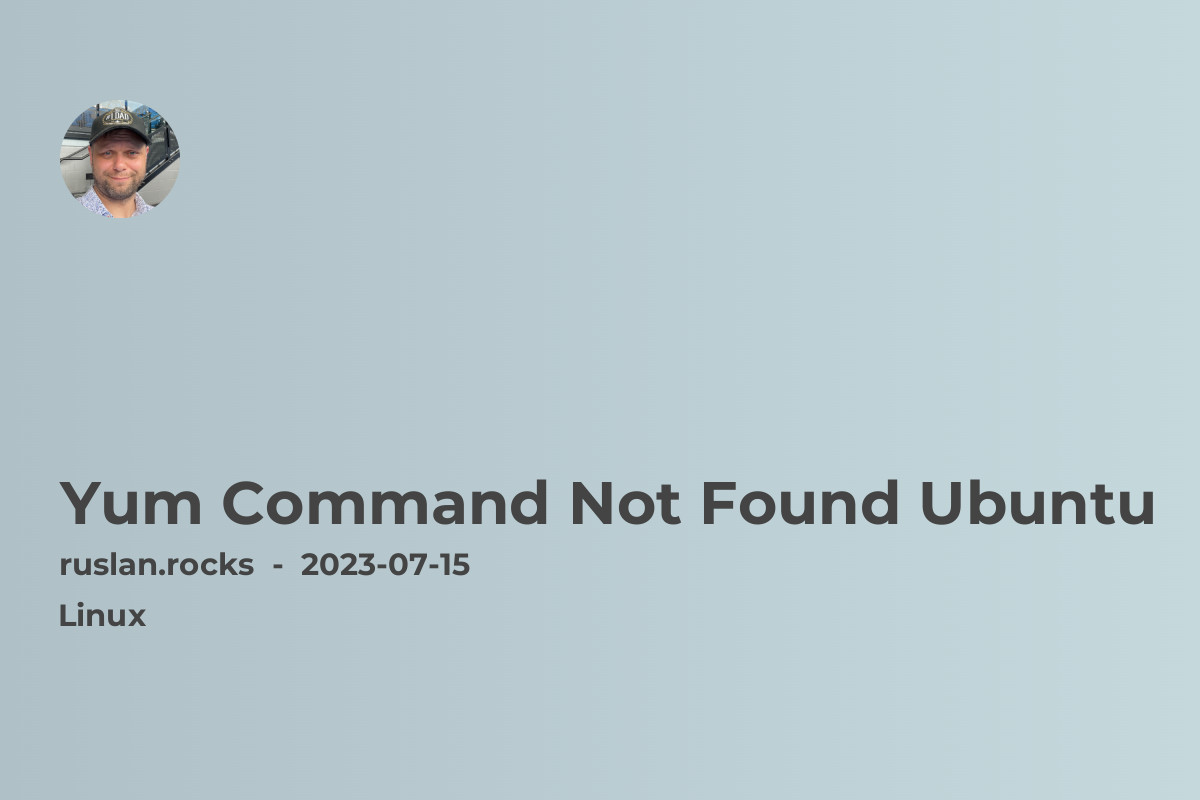- What is Yum?
- Alternative Package Managers for Ubuntu
- Troubleshooting the "Yum Command Not Found" Error
- Related Topics

If you are encountering the "Yum Command Not Found" error in Ubuntu, don't worry, you're not alone. This error typically occurs when you try to use the yum package manager, which is not natively available on Ubuntu. However, there are alternative package managers that you can use to accomplish similar tasks. In this article, we will explore the causes of this error and provide alternative solutions to help you manage your packages effectively in Ubuntu.
What is Yum?
Yum (Yellowdog Updater Modified) is a package management utility commonly used in Red Hat-based Linux distributions such as CentOS and Fedora. It is used to install, update, and remove software packages, as well as resolve dependencies automatically. However, Ubuntu, being a Debian-based distribution, uses a different package management system called apt. Hence, attempting to use yum on Ubuntu will result in the "Yum Command Not Found" error.
Alternative Package Managers for Ubuntu
apt
Apt (Advanced Package Tool) is the default package manager on Ubuntu. It uses the .deb package format and is designed to handle dependencies automatically. You can install, update, and remove packages using the apt command-line tool. To update packages, use the following command:
sudo apt update
sudo apt upgrade
apt-get
Apt-get is another command-line package management tool for Ubuntu. It is similar to apt but with a more advanced and specific set of commands. You can use apt-get to install, update, and remove packages. To install a package, use the following command:
sudo apt-get install package_name
snap
Snap is a package management system developed by Canonical, the company behind Ubuntu. It provides self-contained software packages called snaps, which include all the dependencies required to run the software. To install a snap package, use the following command:
sudo snap install package_name
Troubleshooting the "Yum Command Not Found" Error
Check for Other Package Managers
Before initiating any troubleshooting steps, ensure that you have not accidentally misused the yum command or mistyped a command. Sometimes, users coming from other distributions can accidentally use the wrong command. Verify that you are using the correct package manager for Ubuntu, such as apt or apt-get.
Install Yum on Ubuntu
Although yum is not the default package manager for Ubuntu, it is possible to install it manually if you specifically need to use it. However, keep in mind that this may lead to compatibility and dependency issues. To install yum on Ubuntu, follow these steps:
- Update the package repositories:
sudo apt update
- Install the
yumpackage:
sudo apt install yum
Utilize Synaptic Package Manager
Synaptic is a graphical package management tool for Ubuntu. It provides a user-friendly interface to manage and install packages. If you prefer a graphical user interface over the command line, you can install Synaptic and use it as an alternative package manager for Ubuntu.
To install Synaptic, use the following command:
sudo apt-get install synaptic
Once installed, you can launch Synaptic by searching for it in the applications menu. Use Synaptic to search for, install, and manage software packages on your Ubuntu system.
Related Topics
Expand your knowledge of Linux and Ubuntu by exploring these related topics:
- Common Linux Commands For Beginners
- Introduction to Linux Commands: A Beginner's Guide
- Working with Permissions in Linux: Understanding and Managing Access Control
- Using Package Managers Linux
- Navigating Linux File System
These articles will provide you with valuable insights into Linux command-line usage, file system navigation, and package management in various distributions, further enhancing your Linux skills.
In conclusion, while encountering the "Yum Command Not Found" error in Ubuntu may be frustrating, there are alternative package managers available that can help you manage your packages effectively. By understanding the differences between package managers and exploring their functionalities, you can ensure a smooth experience when it comes to installing, updating, and removing packages in Ubuntu.
